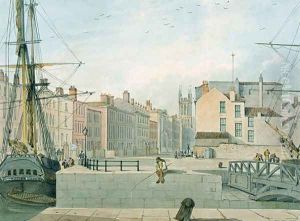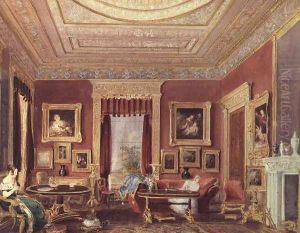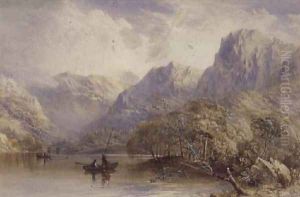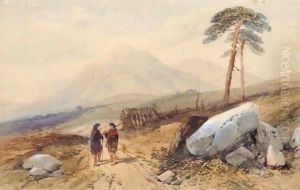Thomas Leeson the Elder Rowbotham Paintings
Thomas Leeson Scarse Rowbotham, known as Thomas Leeson Rowbotham the Elder to distinguish him from his son, was a prominent British artist born in 1782 in Dublin, Ireland. His artistic career was marked by his exceptional skills as a watercolour landscape painter, teacher, and illustrator. Rowbotham's work primarily focused on landscapes, marine scenes, and architectural views, capturing the serene beauty of the British Isles as well as scenes from his travels abroad. His adept use of watercolor to depict the natural beauty and atmospheric effects of landscapes made him a notable figure in the British art scene of the 19th century.
Rowbotham's life was dedicated to the pursuit of art, and he played a significant role in the art community of his time. He was an active member of several art societies, including the New Watercolour Society, where he exhibited regularly. His works were widely appreciated for their detail, color, and the ability to evoke a sense of tranquility. Beyond his contributions as an artist, Rowbotham was also a respected art instructor. He authored several instructional books on drawing and painting, which were instrumental in educating aspiring artists of his era. These publications covered various aspects of art-making, from sketching landscapes to mastering watercolor techniques, reflecting his comprehensive understanding of the artistic process and his desire to share this knowledge with others.
Thomas Leeson Rowbotham the Elder's legacy is closely intertwined with that of his family, particularly his son, Thomas Charles Leeson Rowbotham, who followed in his footsteps to become an accomplished artist in his own right. The elder Rowbotham's influence extended beyond his immediate family, impacting the broader art community and contributing to the evolution of watercolor painting in the 19th century. He passed away in 1853, leaving behind a rich body of work that continues to be celebrated for its beauty and technical mastery. Rowbotham's contributions to art and education have ensured his lasting reputation as a key figure in the history of British landscape and marine painting.



